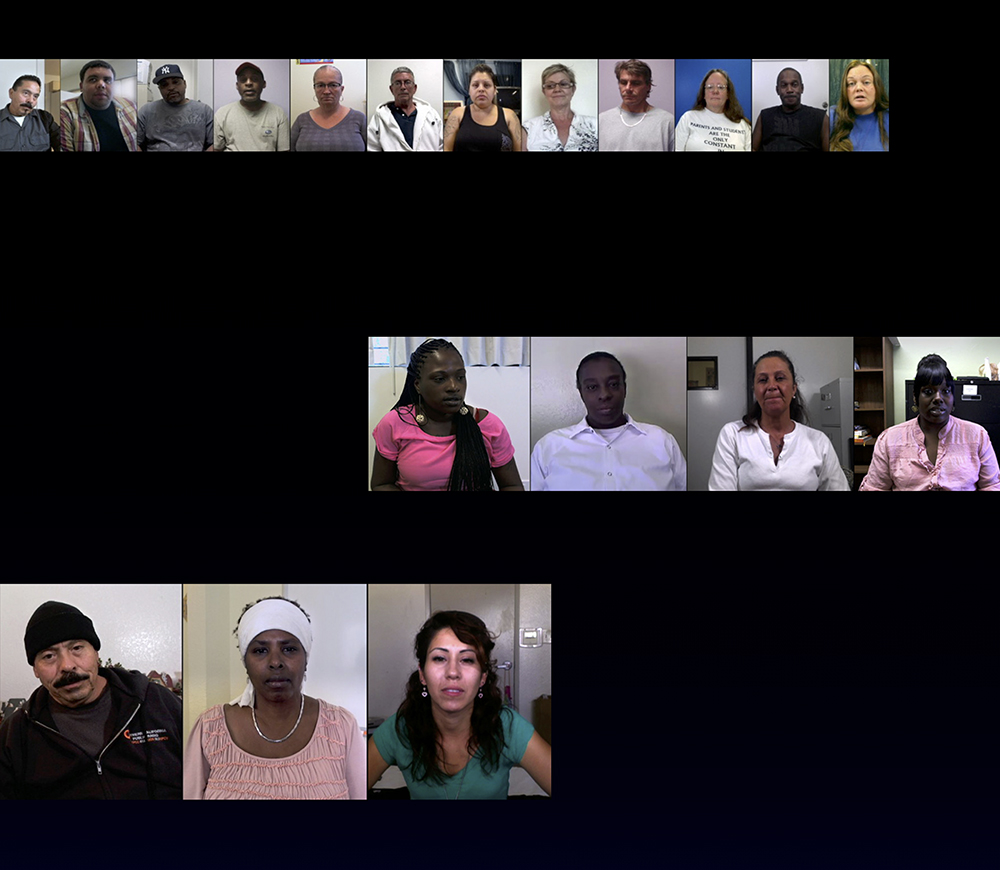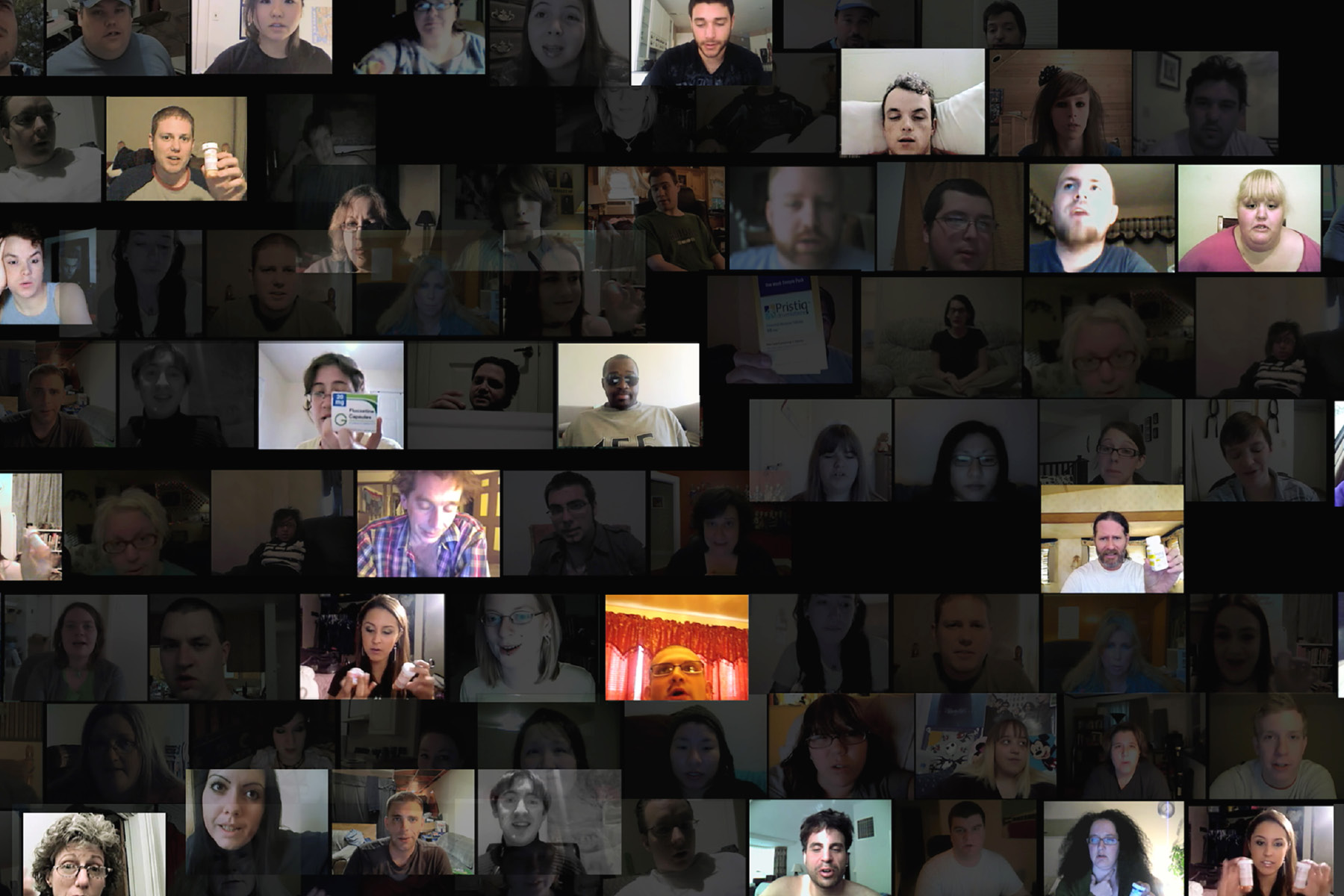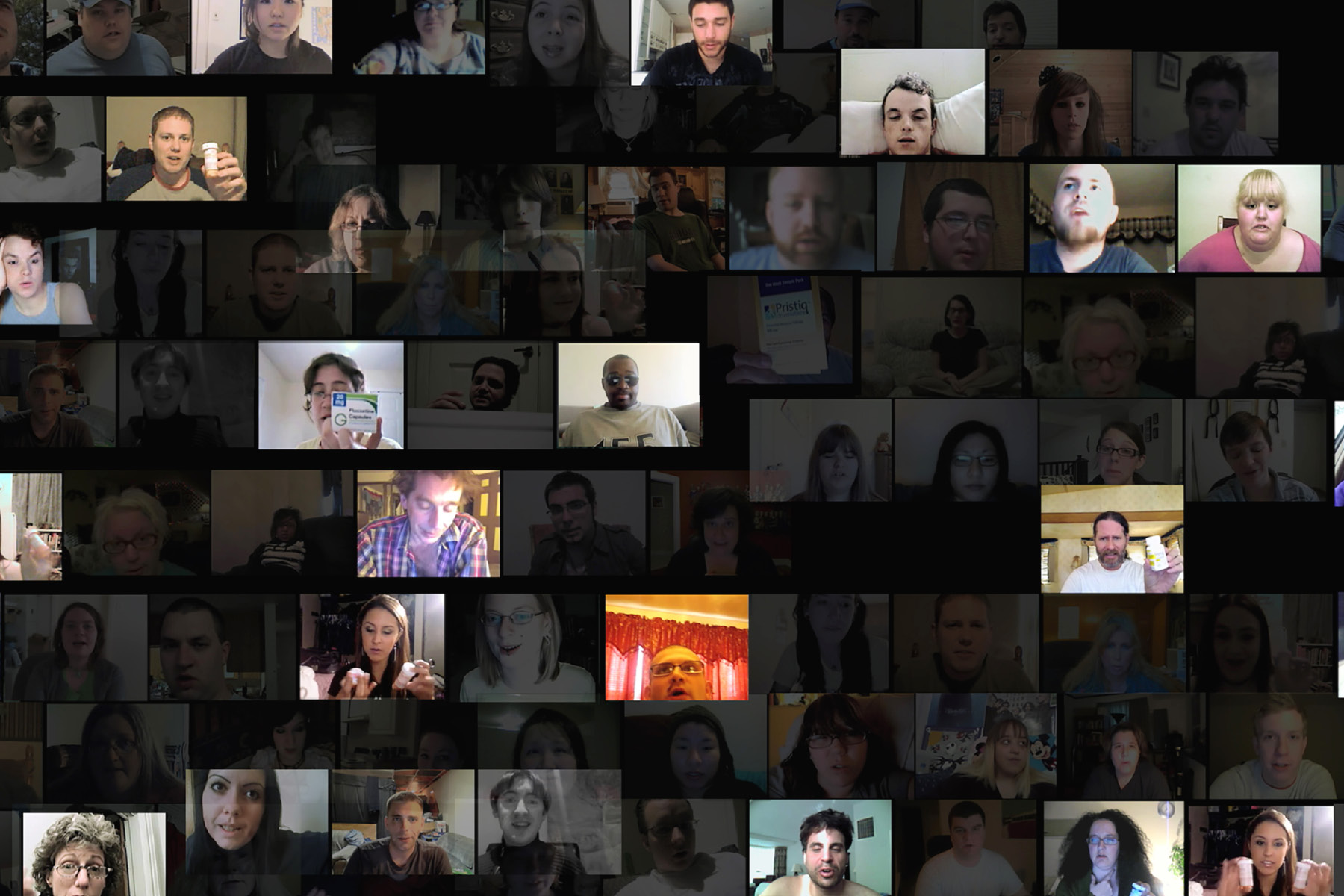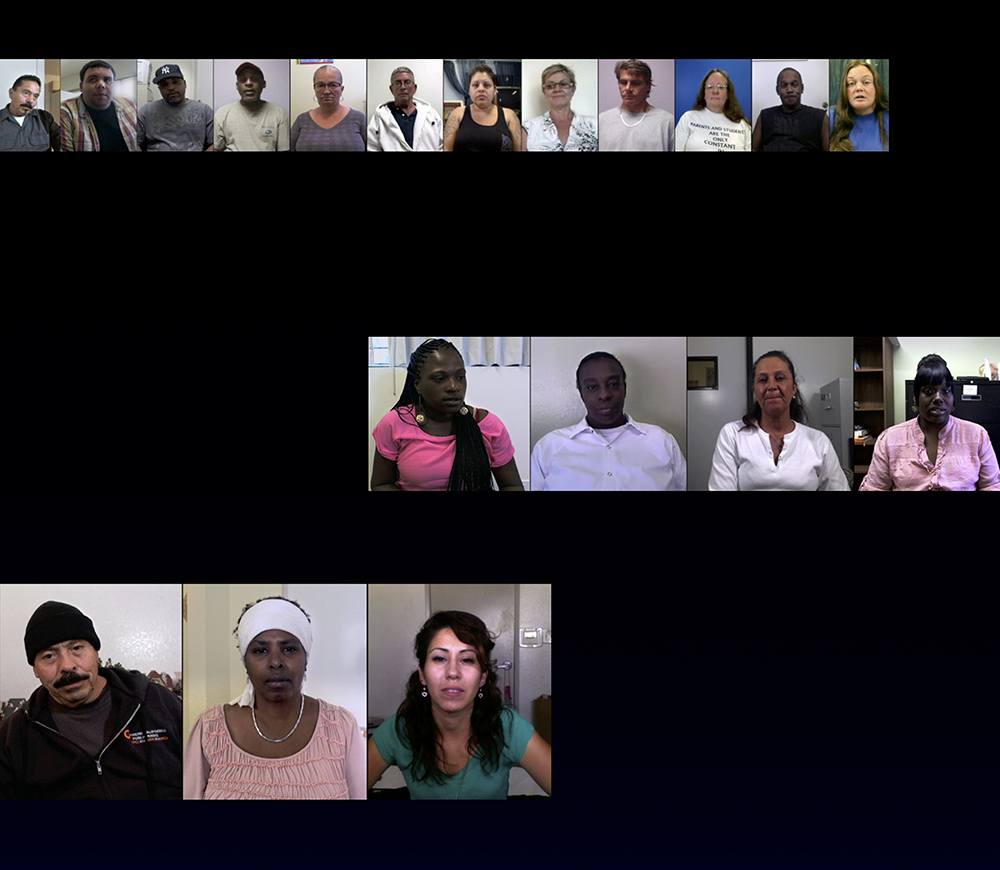Portraits of the multitude
Natalie Bookchin
03.03.2018 – 27.05.2018
Curator: Montse Romaní
Opening: 2 March, 7 pm
Free guided tours: Tuesdays 6 pm, Saturday and Friday at noon
This exhibition brings together seven audiovisual works produced between 2008 and 2017 that explore the paradoxes related to the daily use of communication technologies. Using resources characteristic of the aesthetics of databases, social networks and the collaborative economy, the artist makes it her practice to assemble hundreds of online videos recorded in first person. The result is a composition of self-portraits that reveal the effects of communicative capitalism in North American society.
This exhibition is the first solo exhibition dedicated to Natalie Bookchin to be held in Spain. It brings together a selection of seven video works produced between 2008 and 2017: the series Testament – Count, My Meds, I am not and Laid off, Now he’s out in public and everyone can see, Long Story Short and Mass Ornament.
Natalie Bookchin’s work began to gain international recognition in the 1990s; she is considered part of a generation of pioneering artists in the field of digital culture who took a critical position through the practice of net artivism, a combination of network art activism, far removed from technophile attitudes towards the growing digital divide over the public, economic and cultural sphere in the United States.
In the mid-2000s she began a period in which materials derived from the Internet and social networks would be central to her work. This ranged from using images taken through unsecured webcams accessible via Google to appropriating low quality and resolution images uploaded to YouTube—fair use or “legitimate use” is a legal exception on YouTube that allows you to reuse materials protected by copyright without the owner’s permission.
With the 2008 crisis, social networks experienced exponential circulation of domestic video blogs recorded in first person, a phenomenon that Bookchin defined as a multitude of monologues massively connected through their particular isolation, whose experience has a double condition: while participating in virtual communities where desires and opinions are shared, networks manage their data for the so-called big data economy.
Interested in the debates raised by the critical theory of the media, over the last decade Bookchin has devoted herself to exploring the paradoxes inscribed in communication technologies. Editing hundreds of videos available online, the artist constructs a mosaic of self-portraits on multiple screens arranged serially to make up complex soundscapes, polyphonic voices, choreographed bodies and mobile representations.
The multi-channel video installation Mass Ornament (2009) is the result of recombining dozens of video blogs showing, like mirrors, a series of people dancing alone in their bedrooms imitating pop stars. Through the post-production of spaces, gestures, steps and even camera shots that repeat the same pattern, Bookchin reveals a mechanized representation of the intimate, in which desires, relationships and identities seem to have been mediated by the screen.
In subsequent productions like Now he’s out in public and everyone can see (2012-2017), the synchronization of the images gives way to multiple videos chaotically scattered across the screen, creating a cacophony of faces and sounds that suggest a disconnect with each other. Started during Obama’s presidential term in the United States, Bookchin constructs a new mosaic of video fragments from video blogs in which people from different backgrounds respond to the racial tensions that intensified over this period on the Internet. Confronting a public sphere controlled by the media, Bookchin highlights how in the age of social networks fabricated stories, rumours and misinformation can hardly be distinguished from truthful information.
In her most recent audiovisual works, Natalie Bookchin has produced collective portraits of a socially and politically active multitude made up of singularities questioning aspects that today preoccupy North American society. These are people whose marginality or subaltern position we do not usually see on our television screens. Bookchin again shows a screen with multiple talking portraits, encapsulated in their own frames and which duly, as if it were a Greek chorus, generate echoes and repetitions that highlight the shared experiences and similarities, instigating unexpected and unknown links with each other. Faced with communication technologies that tend to deactivate understanding of the common, Bookchin proposes reimagining them as spaces from which to configure a different notion of the social and the collective, appealing to solidarity and empathy with all of their unrealized potential.













